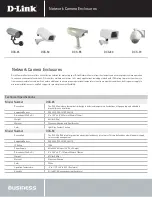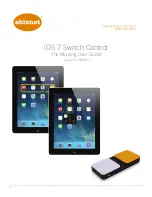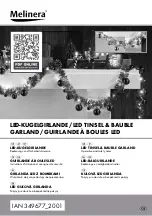
burster Italia s.r.l. · Sede legale ed operativa · Via Cesare Battisti, 16/18 · 24035 Curno (BG) · Tel. +39 035 618120 · Fax +39 035 618250
e-mail:
· http://
www.burster.it
C.F. e P.IVA 11048400151 · Capitale sociale Euro 49.920,00 · R.E.A. di Bergamo 276749
Apparecchi di misura di precisione. Sensori e Sistemi
per grandezze elettriche, termiche e meccaniche
6.3
Decommission
All sensors must be dismantled professionally. Do not strike sensor housings with tools. Do not apply bending
moments on the sensor, e.g. through levers. The torque sensor must be supported to avoid falling down during the
dismantling.
7
Transportation and Storage
The transportation of the sensors must occur in suitable packing.
For smaller sensors, stable cartons which are well padded are sufficient (e.g., air cushion film, epoxy crisps, paper
shavings). The sensor should be tidily packed into film so that no packing material can reach into the sensor (ball
bearings).
Larger sensors should be packed in cases.
7.1
Transportation
Only release well packed sensors for transportation. The sensor should not be able to move back and forth in the
packing. The sensors must be protected from moisture.
Only use suitable means of transportation.
7.2
Storage
The storage of the sensors must occur in dry, dust-free rooms, only.
Slightly lubricate shafts and flanges with oil before storing (rust).
8
Disposal
The torque sensors must be disposed according to the valid provisions of law.
9
Calibration
At the time of delivery, torque sensors have been adjusted and tested with traceable calibrated measuring equipment
at factory side. Optionally, a calibration of the sensors can be carried out.
9.1
Proprietary Calibration
Acquisition of measurement points and issuing of a calibration protocol Traceable calibrated measuring equipment is
being used for the calibration. The sensor data are being checked during this calibration.
9.2
DKD-Calibration
The calibration of the sensor is carried out according to the guidelines of the DKD. The surveillance of the calibrating-
laboratory takes place by the DKD. At this calibration, the uncertainty of measurement of the torque measuring
instrument is determined. Further information can be obtained from burster.
9.3
Re-Calibration
The recalibration of the torque sensor should be carried out after 26 months at the latest.
Shorter intervals are appropriate:
Overload of the sensor
After repair
After inappropriate handling
Demand of high-quality standards
Special traceability requirements
10
Data Sheet
See
www.burster.it































